Previous exhibitions
Happy Cash – 'When cash connects people'
Where lies the future of cash? How does paper currency stack up against online payment, bitcoin and a plethora of other crypto-assets?
CashEssentials sought answers to these questions and asked Wipplay to launch a photography contest that would not only shed light on the future of cash but also portray money in its most tangible form.
Banknotes, coins… we are confronted by cash wherever we go. Cash is subject to all sorts of different connotations, and this plurality was reflected in each of the thousands of photos submitted for competition. But what do the photographs portray? Enlargements of coins and banknotes, price labels, questionable scruples, etc.
Cash is connected to all people and things, cascading around the world like a great current, flowing from one person to the next. The competition’s judge panel consisted of Erick Lacourrège (The Bank of France), Manuela Pfrunder (banknote designer), Päivi Heikkinen (The Bank of Finland), Sam Stourdzé (director of the Rencontres d'Arles photography festival) and photographers Émile Loreaux and Philippe Assalit. Together, they chose the best photos, a selection of which are now presented in this exhibition.
CashEssentials is a platform for debate about payments and monetary ecosystems. Wipplay is a photography start-up based in France.
The exhibition ran from 9 October 2018 to 2 June 2019. Exhibition image gallery.
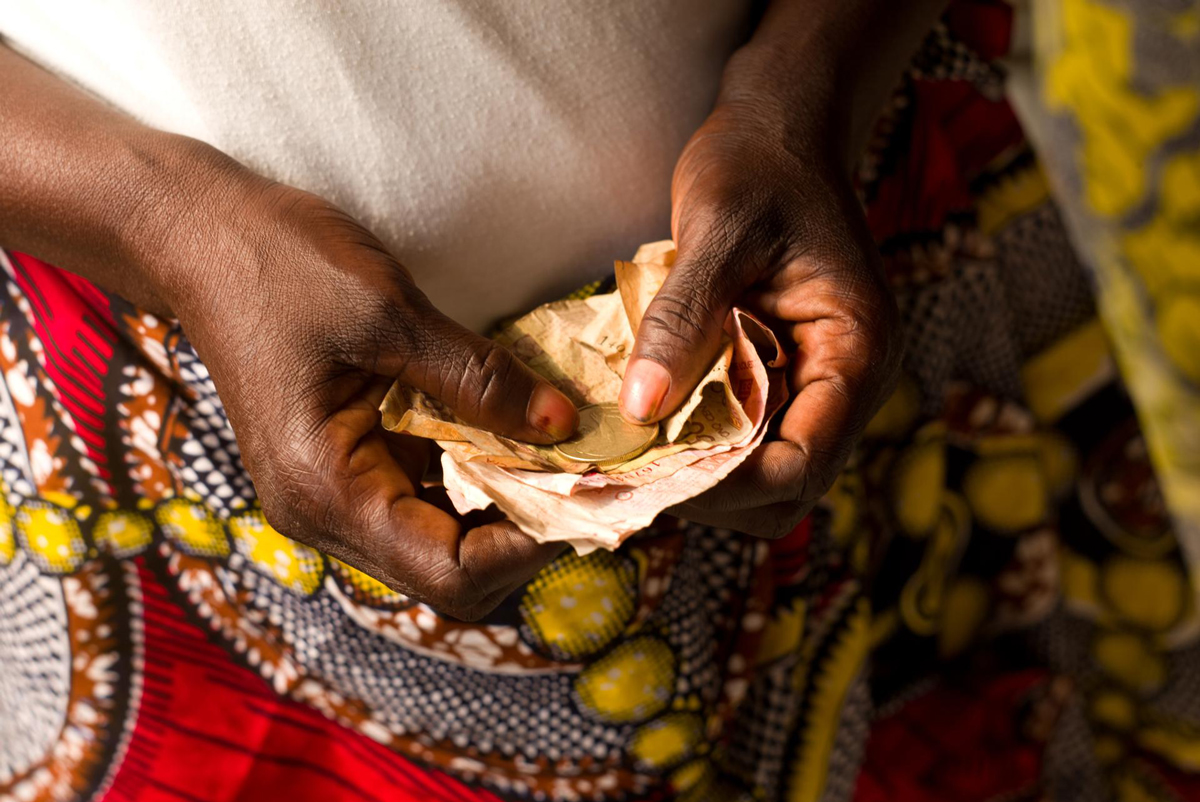
(c) Donovan Heneman
BANK OF FINLAND 1918
The Finnish Civil War was fought from January to May 1918 between the forces of the Senate (i.e. the Finnish Government of the day) and of the socialist People’s Delegation, which rebelled against it.
The Senate’s troops were known as the Whites, while the People’s Delegation’s force was the Red Guard (or Reds). The Imperial German Army joined in the conflict in April 1918 on the side of the Whites, while the Reds included a number of Russian soldiers.
The conflict was extremely bloody. In the aftermath, too, a lot of Red soldiers were executed or otherwise died in the prison camps set up towards the end of the war.
The Bank of Finland operated for three months under the Red People’s Delegation. For this reason, the Senate was forced during the conflict to develop a variety of emergency solutions to compensate for the loss of the central bank.
This current exhibition at the Bank of Finland Museum tells of the Bank’s activities during the Civil War. It also recounts how the war affected Finland’s monetary economy and payment mechanisms.
The exhibition ran from 31 January to 30 September 2018. More information.
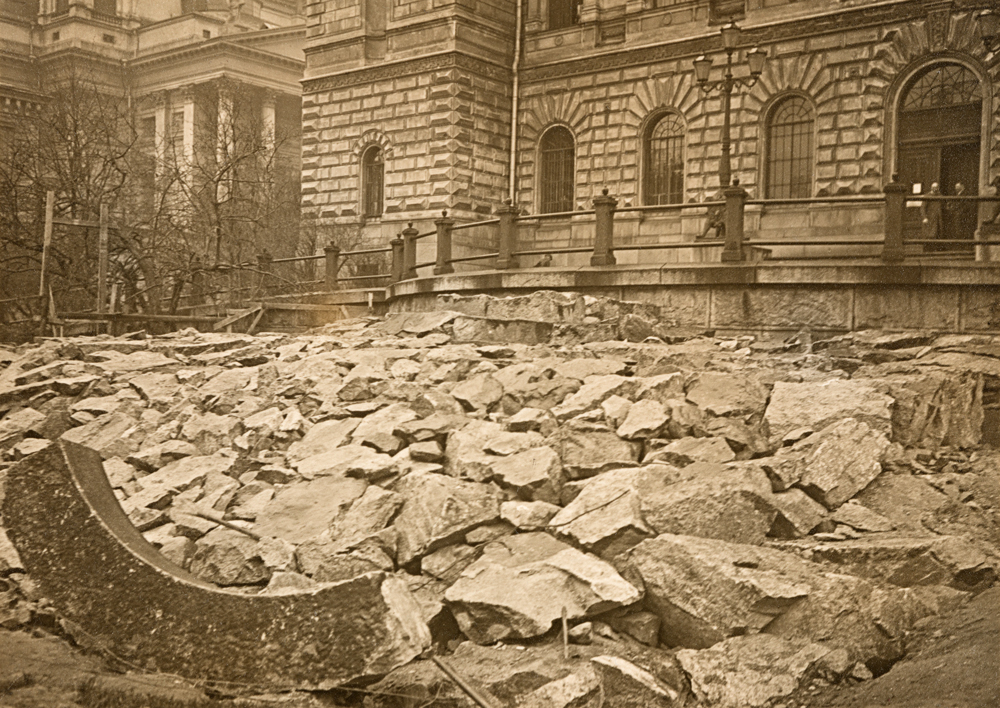
Bank of Finland in April 1918. National Board of Antiquities.
How will Finland make a living in 2067?
The Bank of Finland Museum’s main exhibition of 2017 looks boldly into the future. The highly gifted students of Helsinki Upper Secondary School of Visual Arts and Vaskivuori Upper Secondary School take us forward to the world 50 years from now.
What will Finland be like in 2067? How will it earn a living? What will be valuable? What will Finnishness mean after 50 years?
The exhibition present these perspectives through different forms of art. The young artists have created their own visions of the Finland of the future.
High quality and perceptive drawings, sculptures, video works and animations from the students of the School of Visual Arts tell, each in their own way, how our world will develop.
The students of the music-oriented Vaskivuori Upper Secondary School, on the other hand, have composed and directed music videos, whose images of the world create a multi-dimensional view of the future. In a play based on improvisation, the students fully immerse their personalities into their vision.
Helsinki Upper Secondary School of Visual Arts – Torkkeli – specialises in the visual arts and visual expression. The students’ curriculum includes visual arts subjects, such as visual and art history, painting and drawing, graphic art, sculpture, ceramics, textile art, multimedia, design and architecture, digital expression, photography and film. The school has around 580 students.
Vaskivuori Upper Secondary School has around 1,000 students, of whom 120 follow the music and dance curriculums. The school also offers media studies. Besides these, the school is also known for its special expertise in the fields of information technology as well as mathematics and natural sciences. In the field of music, the school is best known for choir singing, musical theatre, big band, rock music and sound technology. Vaskivuori Upper Secondary School values creativity and arts education.
The exhibition’s multi-artistic production offers a fascinating journey into the perception of the future held by the young people of the today. Welcome to 2067!
The exhibition ran from 24 January to 21 January 2018.
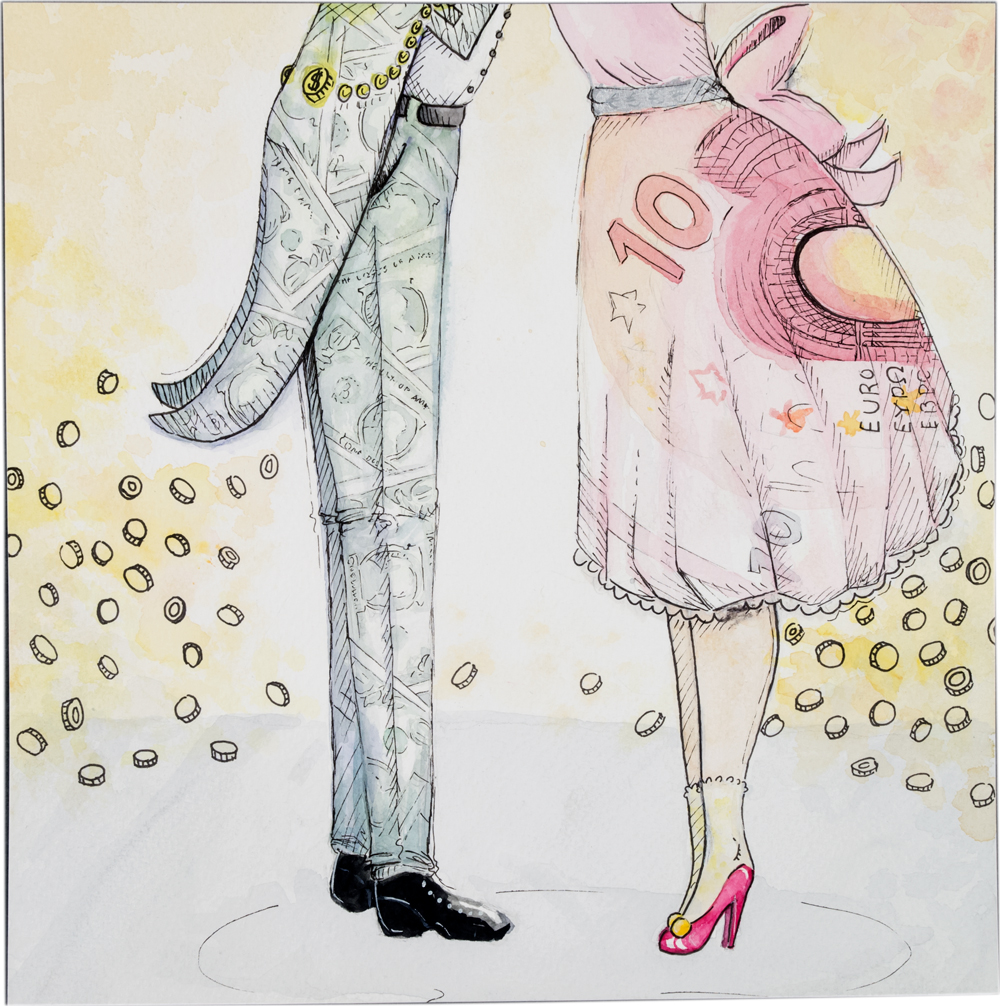
Suvi Reponen
Money attracts money
2016
Watercolour
The Great Depression
What depression?
The Great Depression was an economic crisis that began in the United States and peaked in the 1930s, also undermining society and the economy in Europe and Finland. Bank crises, deflation and bankruptcies became commonplace everywhere.
In the United States, industrial production decreased by nearly 50%, and unemployment grew to unprecedented levels. In Europe, the Depression led to currency crises, unemployment and political upheavals, such as the emergence of dictatorships. In Finland, the Depression was milder than elsewhere in Europe, but here too it caused large debt problems and unemployment, particularly in agriculture and forestry.
In terms of monetary policy, the Depression led to the abolition of the gold standard and bank regulation was tightened. Other consequences included the introduction of a counter-cyclical economic policy and government-led social policy in several countries.
The exhibition ran from 10 May to 14 December 2016.
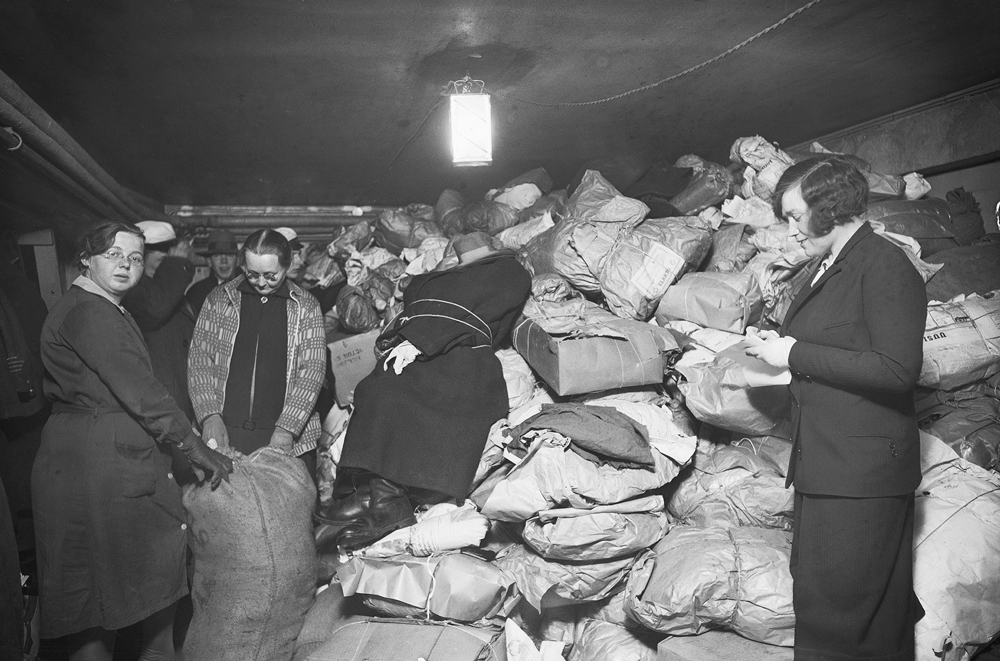
Collecting Christmas parcels for people of limited means. 1931. Photo: The National Board of Antiquities.
Portrait of a nation – 150 years of statistics on Finland
Statistics set the basis for the development of a rational economic policy and society. Statistics Finland will celebrate its 150th anniversary in October 2015. On Tuesday, 29 September 2015, the Bank of Finland Museum will open a seasonal exhibition entitled ‘Portrait of a nation – 150 years of statistics on Finland’. The exhibition, set up in cooperation between Statistics Finland and the Bank of Finland, showcases the evolution of Finnish statistical production and displays a few selected excerpts from the vast spectrum of statistics on offer today. In addition, the exhibition provides insights into ‘statistical Finns’ from the years 1900, 1956 and 2014.
The exhibition ran from 29 September 2015 to 30 April 2016.
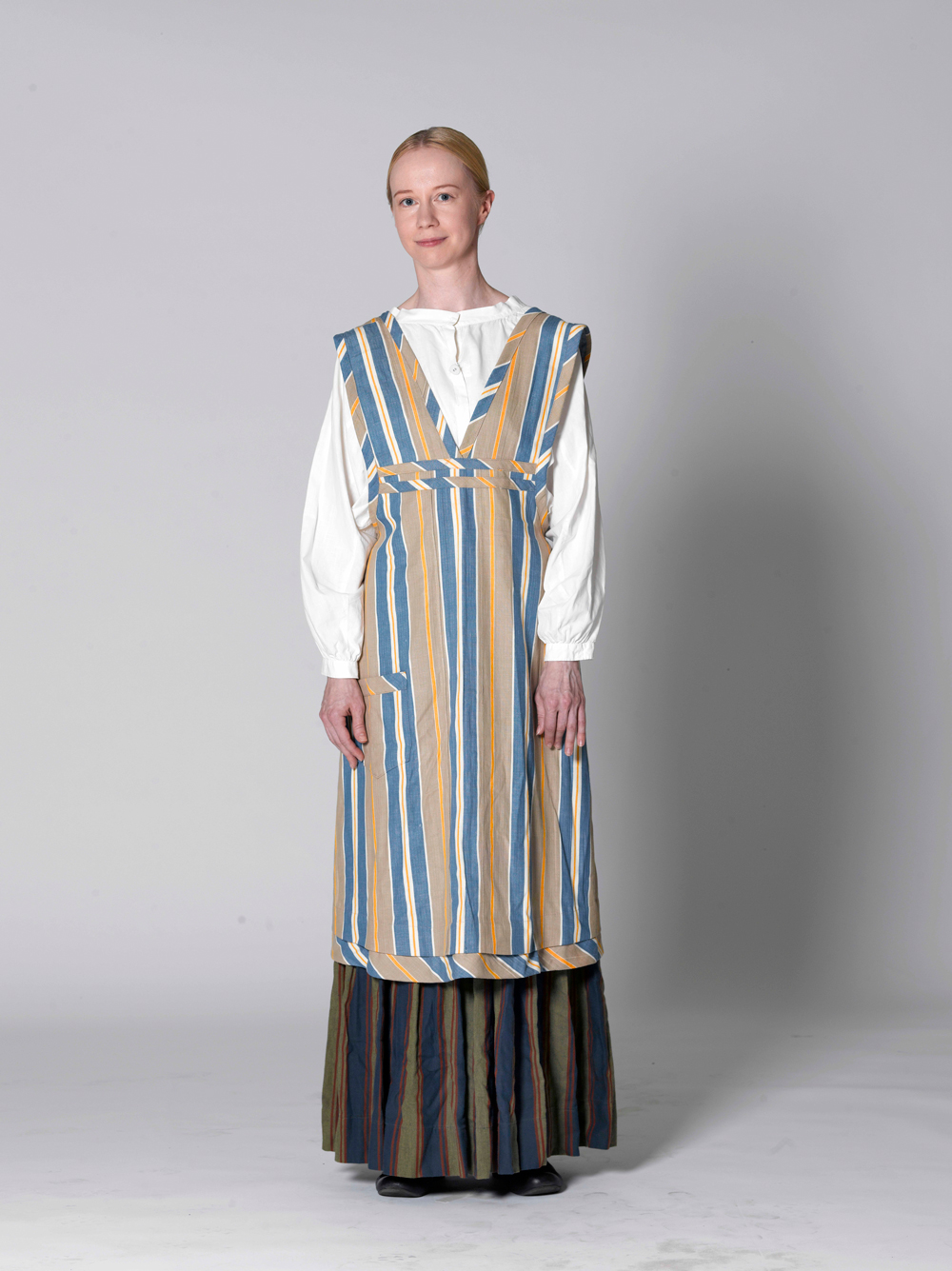
Statistical Finn: Maria, 1900
Our mutual debt – Finnish government borrowing 1859–2015
The history of Finnish government borrowing dates back to the 1800s.The government has raised loans to finance infrastructure investments, bolster the Bank of Finland’s foreign reserves and increase the room for fiscal policy manoeuvre. Most of central government borrowing has been carried out through the issuance of bonds in both domestic and international financial markets.
The present exhibition shows a collection of Finnish government bonds through the decades, beginning with the first railway bond issued in 1859. The exhibition also presents a cross-section of developments in central government debt and its history.
Manuscript and exhibition articles: State Treasury
The exhibition ran from 21 April to 20 September 2015.
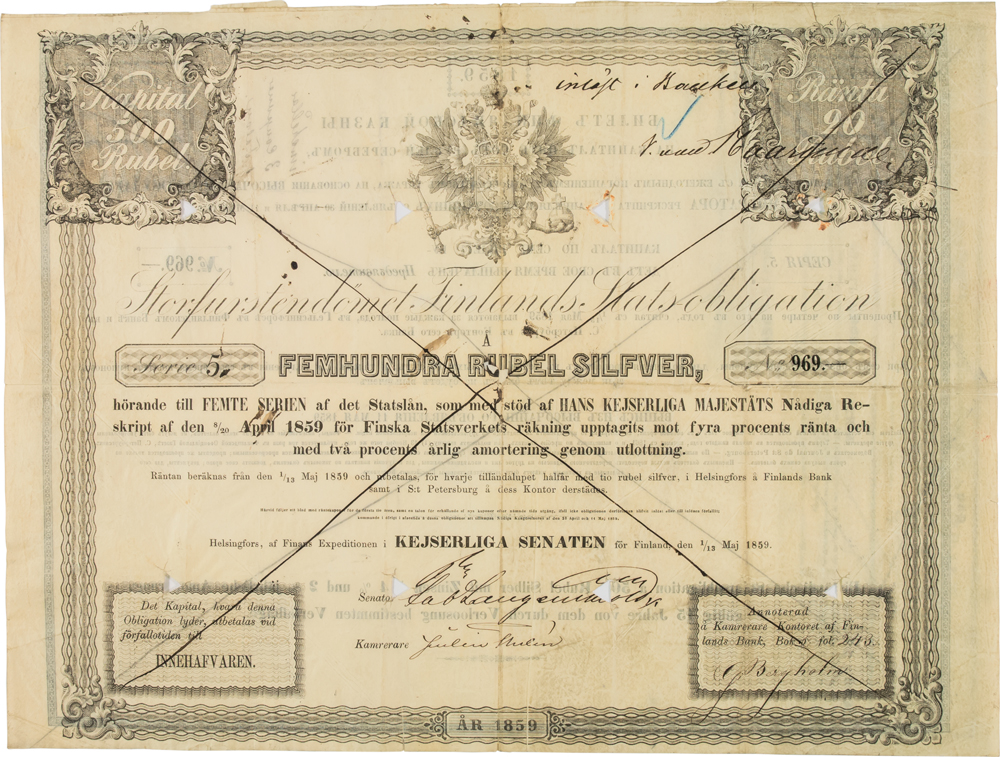
Bond from 1859 (railway Helsinki to Hämeenlinna. 4 %, 50 years, Ruble-denominated, arranged by von Stieglitz, signed by Fabian Langenskiöld.
The International Monetary Fund is celebrating its 70th anniversary
The International Monetary Fund (IMF) is an international organisation that works to foster global financial stability. The IMF is the premier worldwide forum for economic cooperation. The establishment of the organisation was agreed upon 70 years ago at the Bretton Woods conference.
The current exhibition at the Bank of Finland Museum portrays the history of the IMF and its past and present activities. The exhibition also shows the importance of the IMF and the World Bank for Finland.
The exhibition ran from 14 October 2014 to 31 March 2015.
Cash as art – banknote sketches
The exhibition presented sketches for Bank of Finland banknotes. On display were artists' proposals and perspectives from the first through to the last-markka denominated banknotes (1860–1986).
The exhibition included sketches by, amongst others, the following artists: Aleksandr Fadejev, Akseli Gallén-Kallela, Aarne Karjalainen, Tapio Wirkkala, Erik Bruun, Torsten Ekström, Eeva Oivo, Pentti Rahikainen ja Olavi Vepsäläinen.
The exhibition ran from 6 May to 30 September 2014.
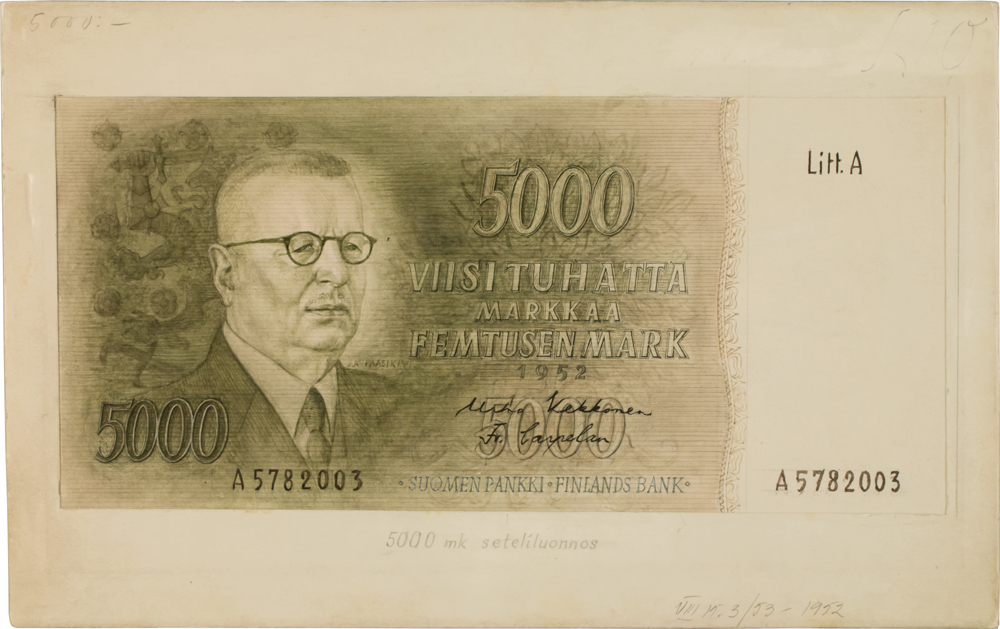
Tapio Wirkkala's sketch for 5000 markka banknote, 1952.
Economic books that changed the world
The Bank of Finland Library is the leading specialist library in the field of monetary policy and finance in Finland. It serves the Bank’s own experts but also welcomes other researchers and students. To celebrate the 70th Anniversary of the Bank of Finland Library, we have built an exhibition of select works from the Library’s collections reflecting interesting developments in monetary policy.
The writings have been divided into four categories:
- History of monetary policy thought
- Monetary policy in Finland
- International monetary integration
- Financial crises
We hope that the exhibition will highlight old classics as well as more recent works and provoke a debate on which books actually deserve to be part of the exhibition. The books have been selected by the monetary history researchers Antti Kuusterä and Juha Tarkka.
The exhibition ran from 4 February to 30 April 2014.
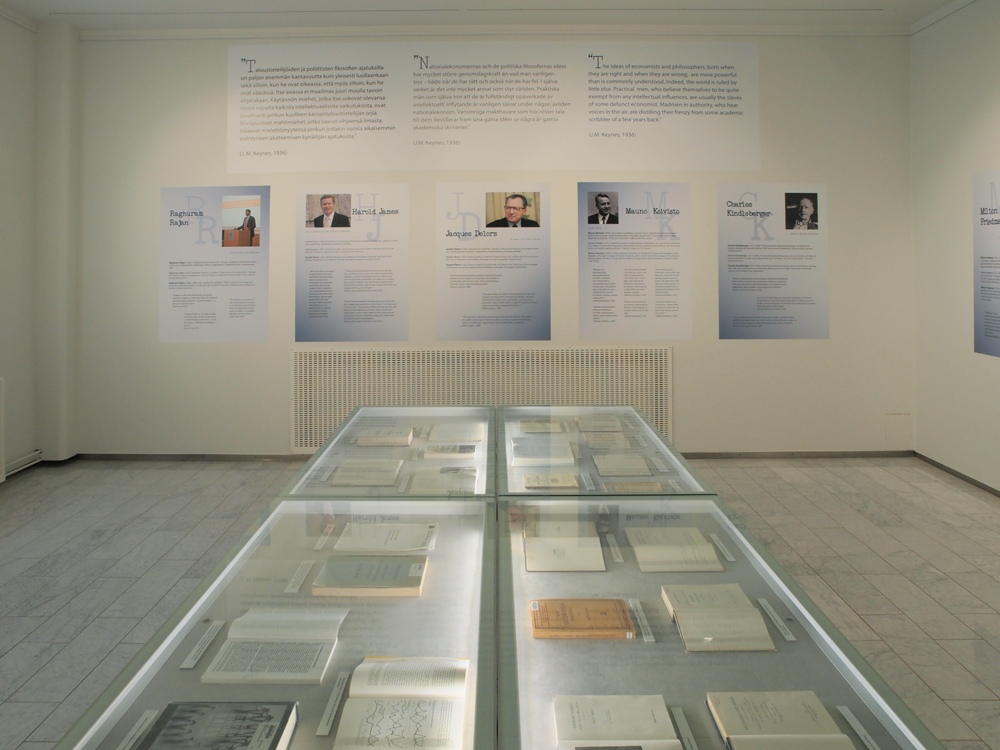
Helsinki Stock Exchange: 100 years
The seasonal exhibition at the Bank of Finland Museum presented the highlights from different decades in the 100 year history of Helsinki Stock Exchange. The exchange has changed with time towards its current role as an international trading forum. Economic upheavals over the years have all been reflected in its work: upswings and downswings, wartime, post-war reconstruction, financial market liberalisation and ongoing internationalisation. Stock exchange operations have not previously been presented so extensively in Finland.
Finland’s first formal stock exchange session was held on 7 October 1912, although the roots of stock exchange trading stretch back to the 1860s. Trading was at first irregular, with shares and other securities being traded at occasional unofficial auctions. Regular, organised stock exchange activities began in October 1912 at the present-day stock exchange on Fabianinkatu in Helsinki.
The exhibition featured original documents and a splendid collection of share certificates of Finnish companies from different periods.
The exhibition ran from 29 January to 31 August 2013.
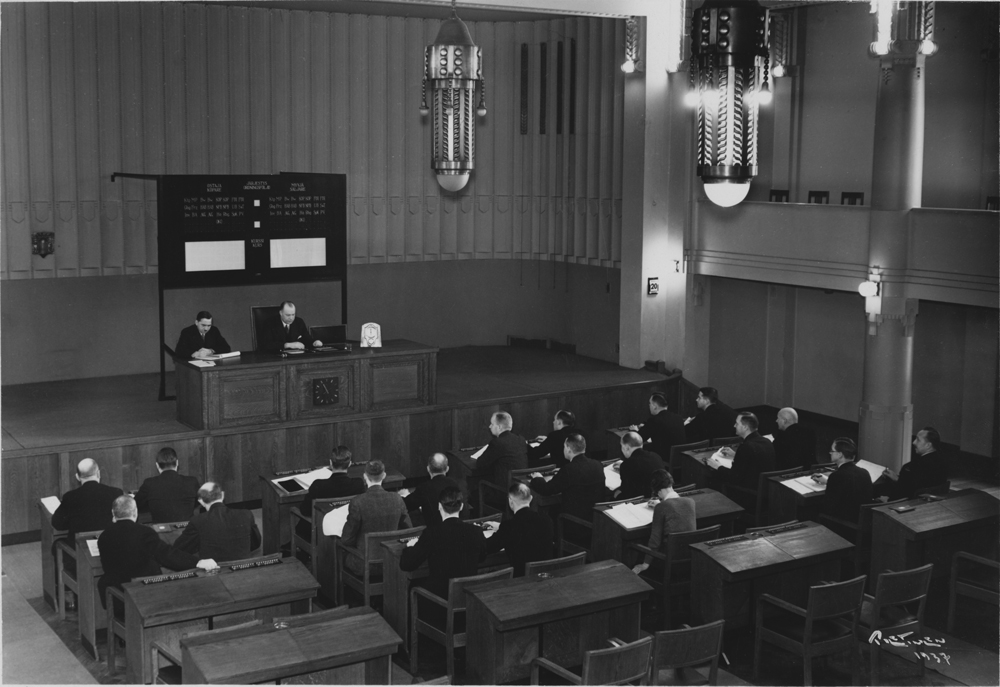
Helsinki Stock Exchange in 1937. The electromechanical quotation board was installed in 1935.
The last Finnish markka
Finnish banknotes 1945–2002
This seasonal exhibition presented Finnish banknotes from 1945 until the euro cash changeover in 2002. The redemption of these banknotes ends on 29 February 2012, ten years after the changeover.
Only a piece of paper
A banknote is only a piece of paper with no inherent value. The value of a banknote is based on trust in the issuer. This trust depends on the ability of the banknote to fulfil its role as a payment instrument and keeper of value.
The Bank of Finland is the sole issuer of banknotes in Finland and during the timeline covered by the exhibition the Bank also decided on the face values, paper, design and production methods of banknotes. The final decision on the banknotes was made by the Parliamentary Supervisory Council on the proposal by the Bank’s Board.
The exhibition ran from 27 January to 31 December 2012.
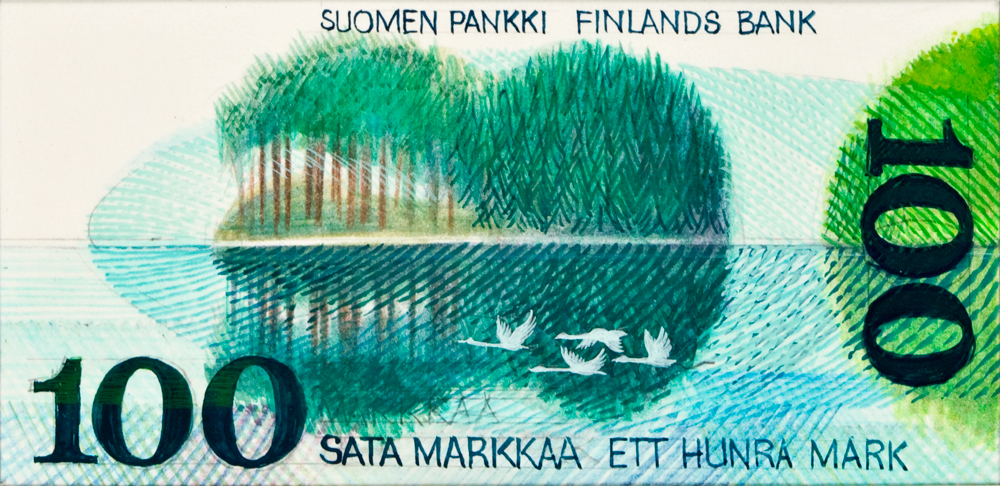
Erik Bruun's sketch for a 100-markka banknote in 1982.
Three currencies, two centuries, one Bank of Finland
The Bank of Finland Museum's exhibition ‘Three currencies, two centuries, one Bank of Finland’ commemorated the Bank of Finland’s 200th anniversary.
The exhibition aimed at presenting how monetary reforms affect the lives of ordinary citizens. Changing one form of cash, or even an entire currency, for another is always a major event. Changing this key factor of everyday life forces people to think again about the prices of the goods they buy and the value of their assets. The Bank of Finland was founded in 1811 specifically to oversee the changing of the currency used in Finland at that time, from Swedish riksdaler to Russian rouble. This seasonal exhibition at the Bank of Finland Museum tells the story of the monetary changes that have occurred since then, during the 200-year history of the Bank of Finland.
The exhibition ran from 20 January 2011 to 20 January 2012.
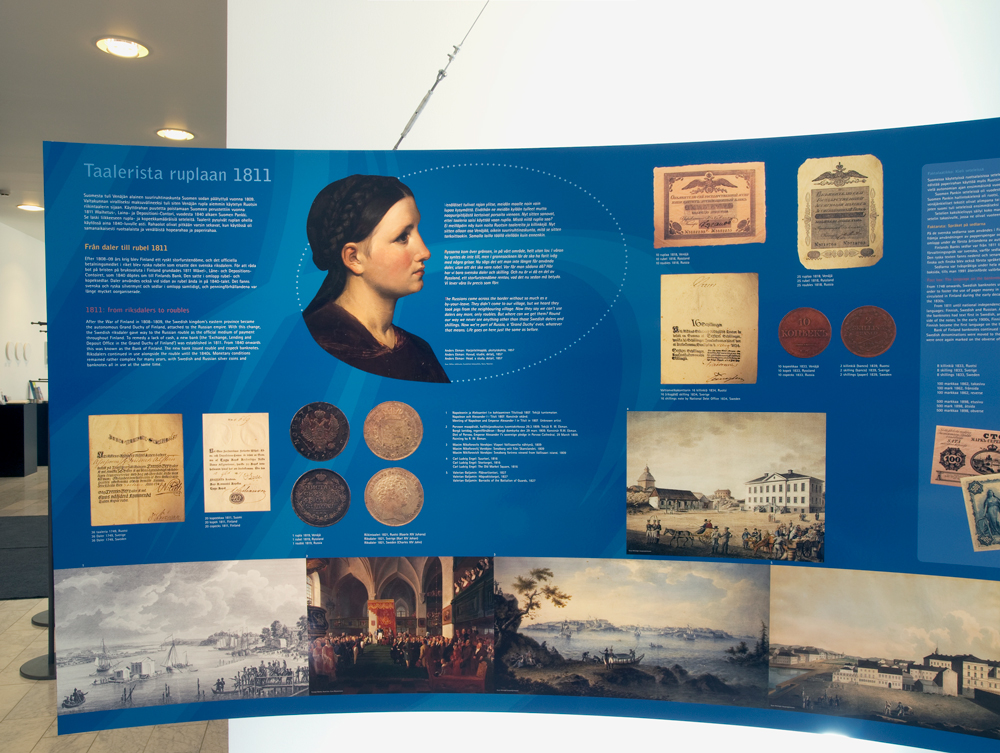
Three currencies, two centuries, one Bank of Finland
Vitamin D! The Devaluations of 1957 and 1967
The eighth seasonal exhibition at the Bank of Finland museum was opened on 27 October 2009 and it was on display until the end of 2010.
The purpose of the seasonal exhibition is to explain the background to the devaluations in Finland of 1957 and 1967, how the devaluations were brought about and their effect. The exhibitions at to enable the visitor of today to understand the monetary policy environment of a time when parliamentary turnover was so frequent that the average age of a government was only a year.
In the post-war years the Bank of Finland found it had to adjust the external value of the markka countless times. By joining the Exchange Rate Mechanism (ERM) in 1996, stability was brought to the Finnish currency's value. The euro was adopted, initially as scriptural money in 1999, and subsequently the cash changeover was made at the beginning of 2002.
The title of the exhibition, with its reference to 'Vitamin D', does not seem to have been used to refer to the devaluations of the 1950s and 60s, but by the 1980s it had become a firm part of the economic jargon of the time.
The exhibition ran from 27 October 2009 to 31 December 2010.
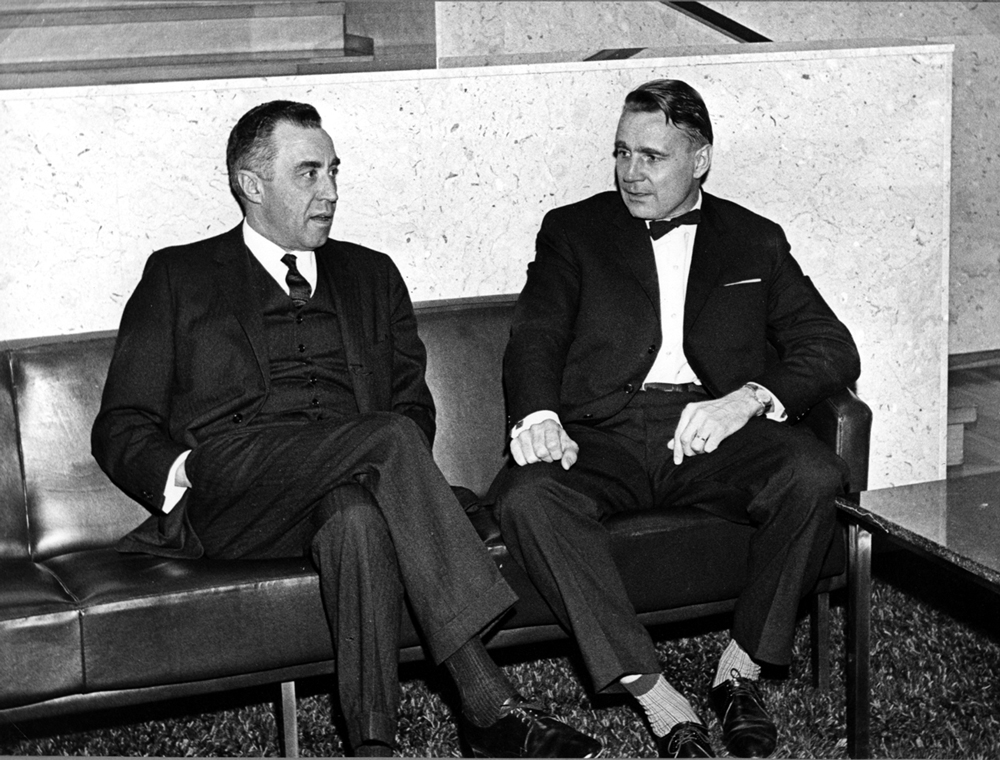
The Governor of the Bank of Finland, Mr Klaus Waris, and the Minister of Finance, Mr Mauno Koivisto, 1967.
Euro - a window to cultural identity
The Museum’s seventh seasonal exhibition was about Euro and it's cultural identity. The euro was launched on 1 January 1999 as scriptural money. Euro in cash form was introduced for the first time in 12 EU member states on 1 January 2002.
Except for the printing code and serial number, euro banknotes are identical irrespective of the country in which they are produced or issued. The common side of euro coins is identical in all countries, whereas the obverse or the national side varies from country to country. The national sides show symbols or images that reflect the respective country's culture or what is unique for it. Therefore euro coins most effectively capture what the single currency is all about: in a multifaceted Europe the same currency can be used anywhere in the euro area, regardless of nationality, language or culture.
Cash money is an example of everyday art at its best. Banknotes represent the utmost in graphic design and graphic art, while coins are a prime example of sculpture. In coins in particular, the feel of the material is tangible. Indeed, the feel and unique characteristic of metal are highly prominent in this exhibition. Although in principle each denomination is a mixture of the same material, minted using the same mould, there are variations among the coins of different countries and between different mint batches. This can also be seen as an allegory of European diversity: coins are similar, yet different.
The exhibition ran from 8 January to 22 October 2009.
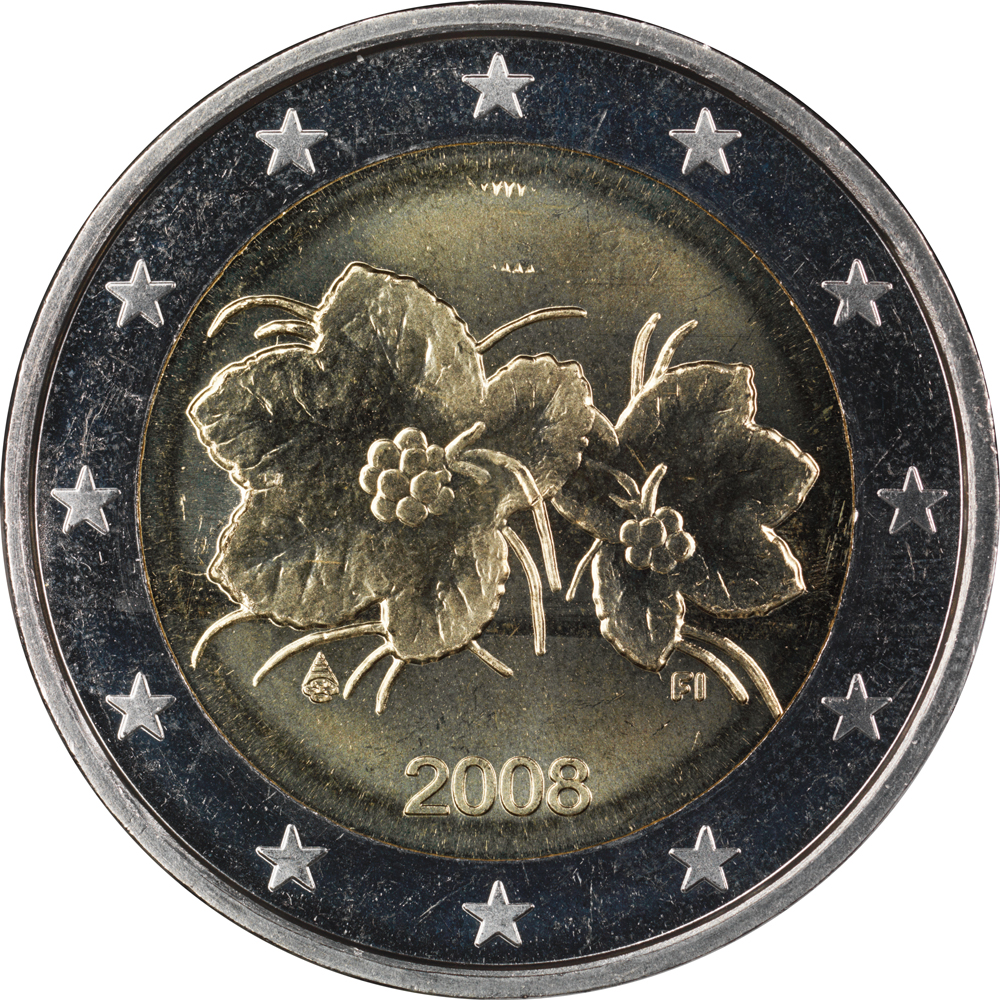
The front side of the Finnish 2€ coin.
Gold – The basis of a monetary system
The Museum’s sixth seasonal exhibition was about gold as the basis of a monetary system. The exhibition illustrated how gold has been used as a means of exchange and highlighted monetary systems based on gold both in Finland and internationally – without forgetting Lapp gold or the gold collection in the war time. Visitors to this exhibition could view Aleksi, the largest gold nugget ever panned in Finland. It was discovered in Laanila, Inari, in Lapland in 1910.
The exhibition ran from 8 April to 2 November 2008.
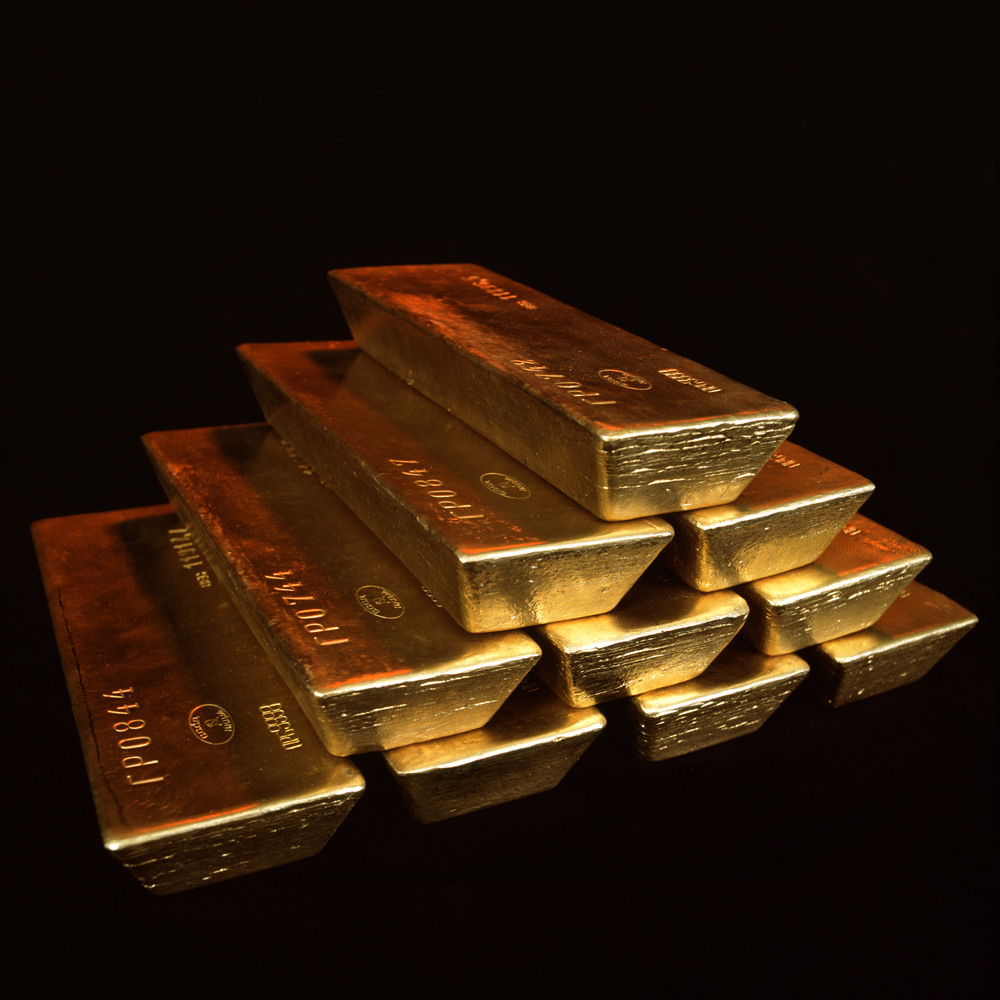
Bank of Finland's gold reserves. Each bar weighs approximately 12 kg.
A century of bank advertising
Bank advertising as a symbol of overall economic thinking in society was the theme of the Museum’s 5th exhibition titled ‘One hundred years of bank advertising’. Advertising has been used to direct the public's actions in the use of their funds in whatever direction has been considered desirable. For years, the advertisements highlighted the Finnish virtues of frugality and negativity to consumerism. Old-style advertisements tell of their time in an informative and entertaining manner.
“This exhibition illustrates well Finland’s transition from an old agrarian society to a modern consumer society. In order for loan markets to function well, healthy competition and thus advertising are needed, but some of the current trends in advertising consumer loans are worrying”, said Sinikka Salo, member of the Board, in her inauguration speech.
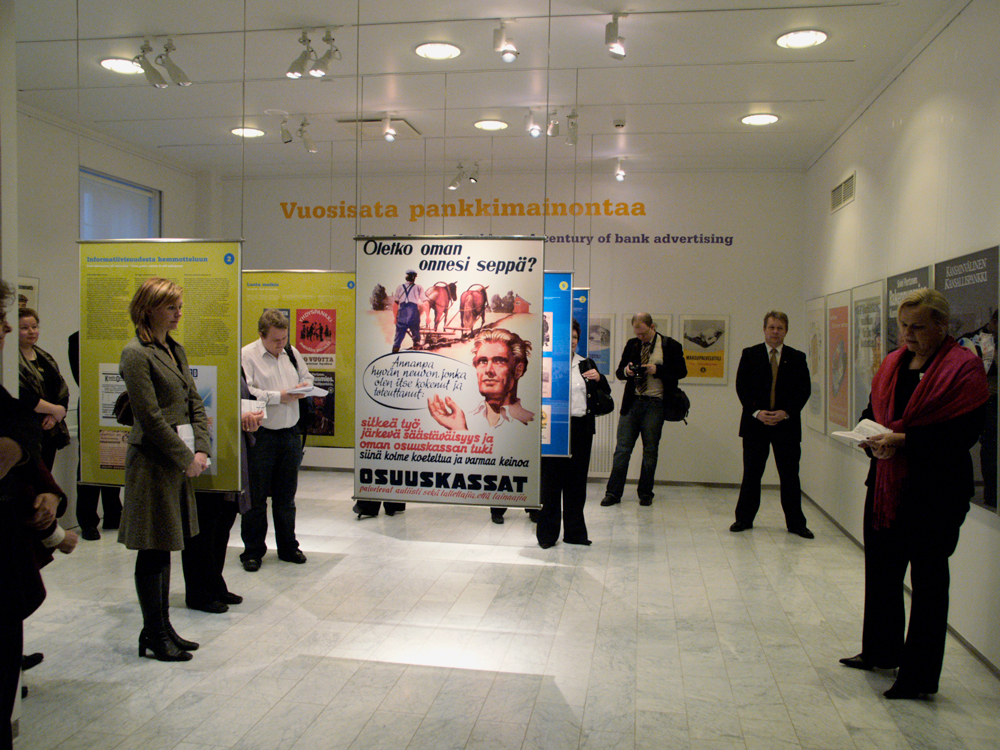
The exhibition ran from 9 January to 30 September 2007.
Snellman and the Finnish markka
The fourth seasonal exhibition at the Bank of Finland Museum was titled ‘Snellman and the Finnish markka’, as 2006 celebrated 200 years since the birth of Johan Vilhelm Snellman and 125 years since his death.
The exhibition focuses on the period 1863–1868, when Snellman, in his capacity as Chief of Finance at the Treasury, was closely involved with the Bank of Finland. Snellman's most significant achievement while holding this office was stabilisation of Finland's monetary conditions. In 1860, Finland had received a monetary unit of its own called the markka, the value of which was tied to the paper rouble, which continued to fluctuate. By pegging the value of the markka to silver in 1865, and thereby stabilising the value of the currency, J. V. Snellman completed the work of his predecessor Fabian Langenskiöld. The same objective – the stabilisation of the value of money – was also the key motivation behind the next major monetary reform, namely the introduction of the euro some 130 years later.
The exhibition ran from 10 January to 31 December 2006.
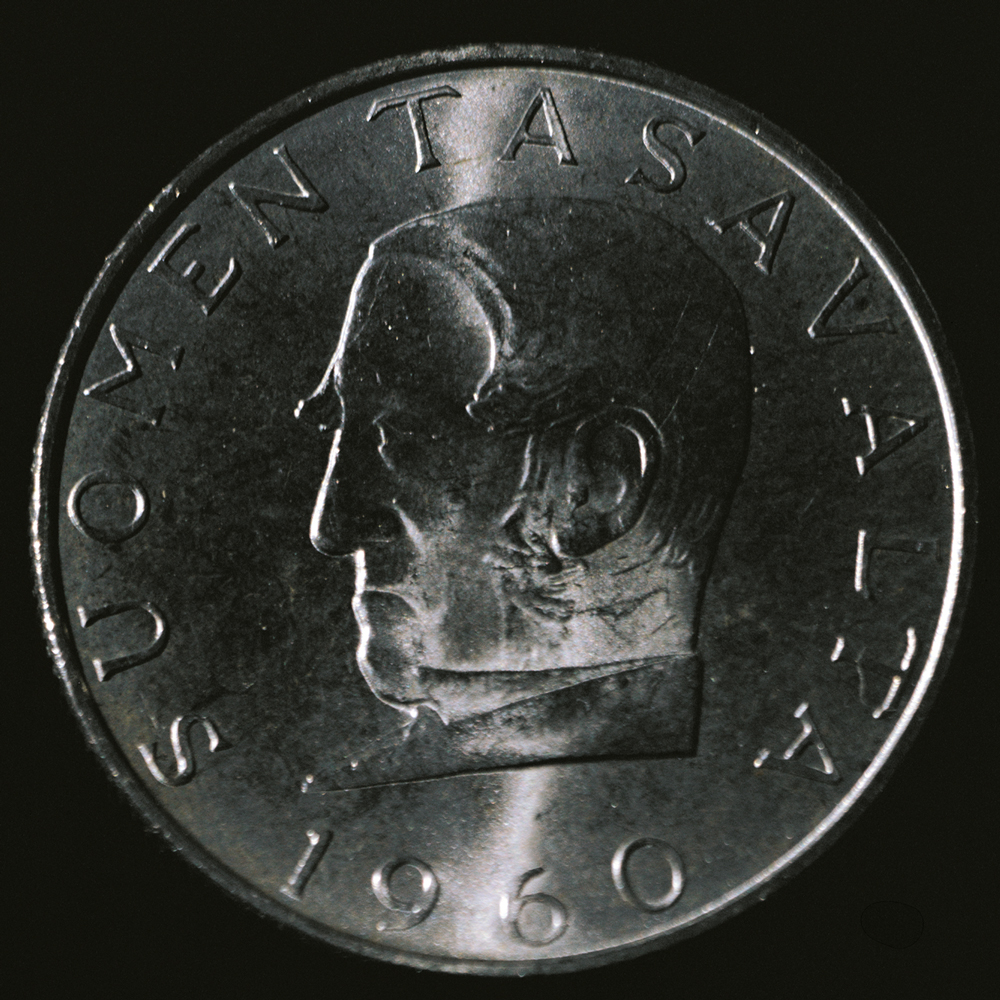
A 1000 mark coin from 1960. Design Toivo Jaatinen.
The Bank of Finland through cartoonists' eyes
The third seasonal exhibition highlighted how the Bank of Finland has been viewed by political cartoonists from early 1950s to the present day. On display were samples of work by four of Finland's better-known and most productive cartoonists: Kari Suomalainen, Terho Ovaska, Henrik Karlsson and Kaarlo A. Rissanen.
Kari Suomalainen was in-house cartoonist for the national quality newspaper Helsingin Sanomat 1966–91 and Terho Ovaska succeeded him, 1991–2005. Henrik Karlsson's penmanship has been published in Helsingin Sanomat since 1986, while Kaarlo A. Rissanen has been creating drawings illustrating the machinations of the economy in the financial journal Kauppalehti since 1969.
The exhibition ran from 14 October to 31 December 2005.
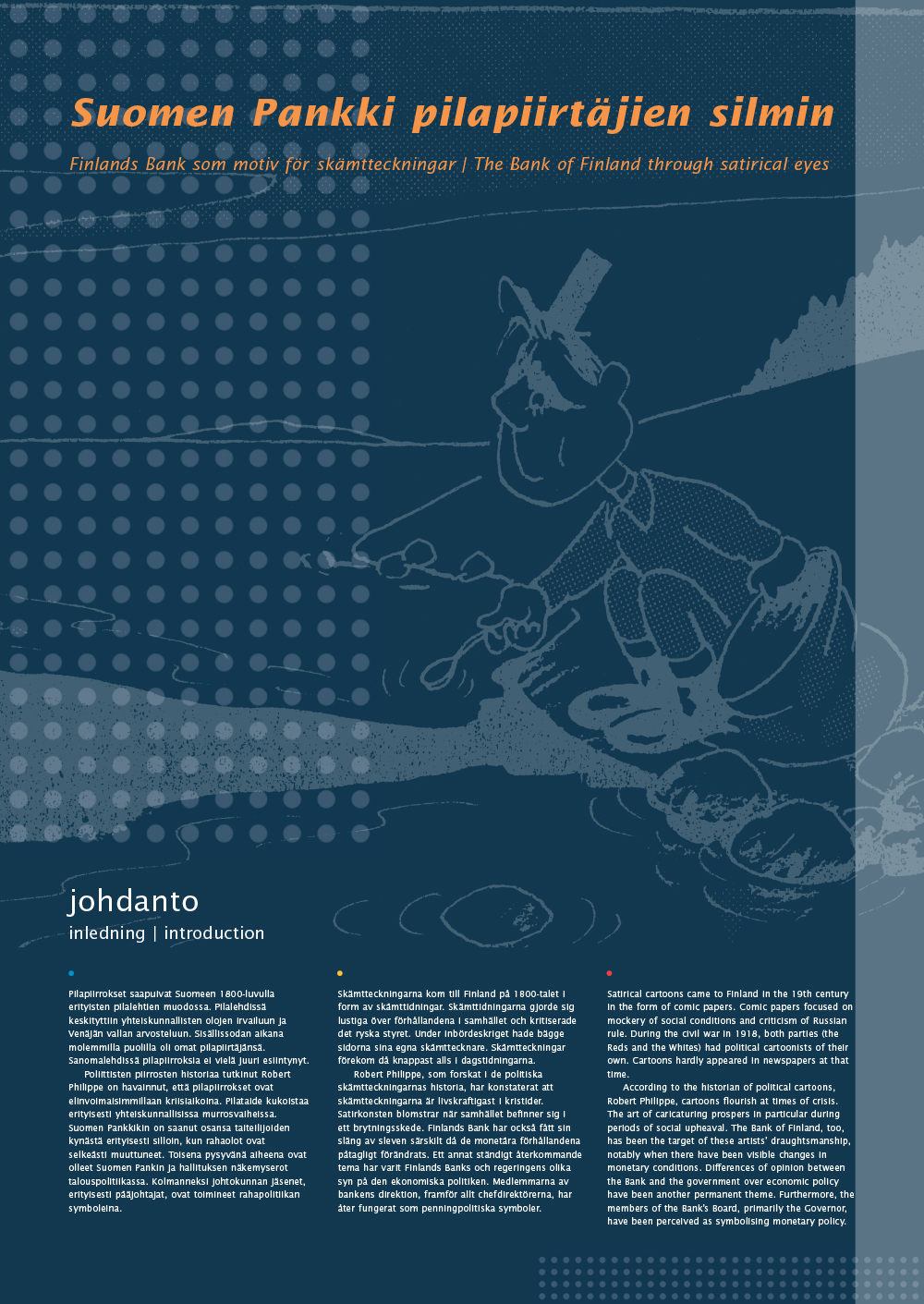
Euro banknote design proposals on view
The second seasonal exhibition focused on sketch proposals for euro banknote series designs. The sketches were those submitted to the design competition launched by the European Monetary Institute (EMI), the predecessor of the European Central Bank. The competing sketch proposals on display at the Museum changed monthly, with eight series on display at a time. In September 2004, the display featured the Finnish competing entries by artists Erik Bruun, Daniel Bruun and Johanna Bruun.
The exhibition ran from 1 September 2004 to 30 September 2005.
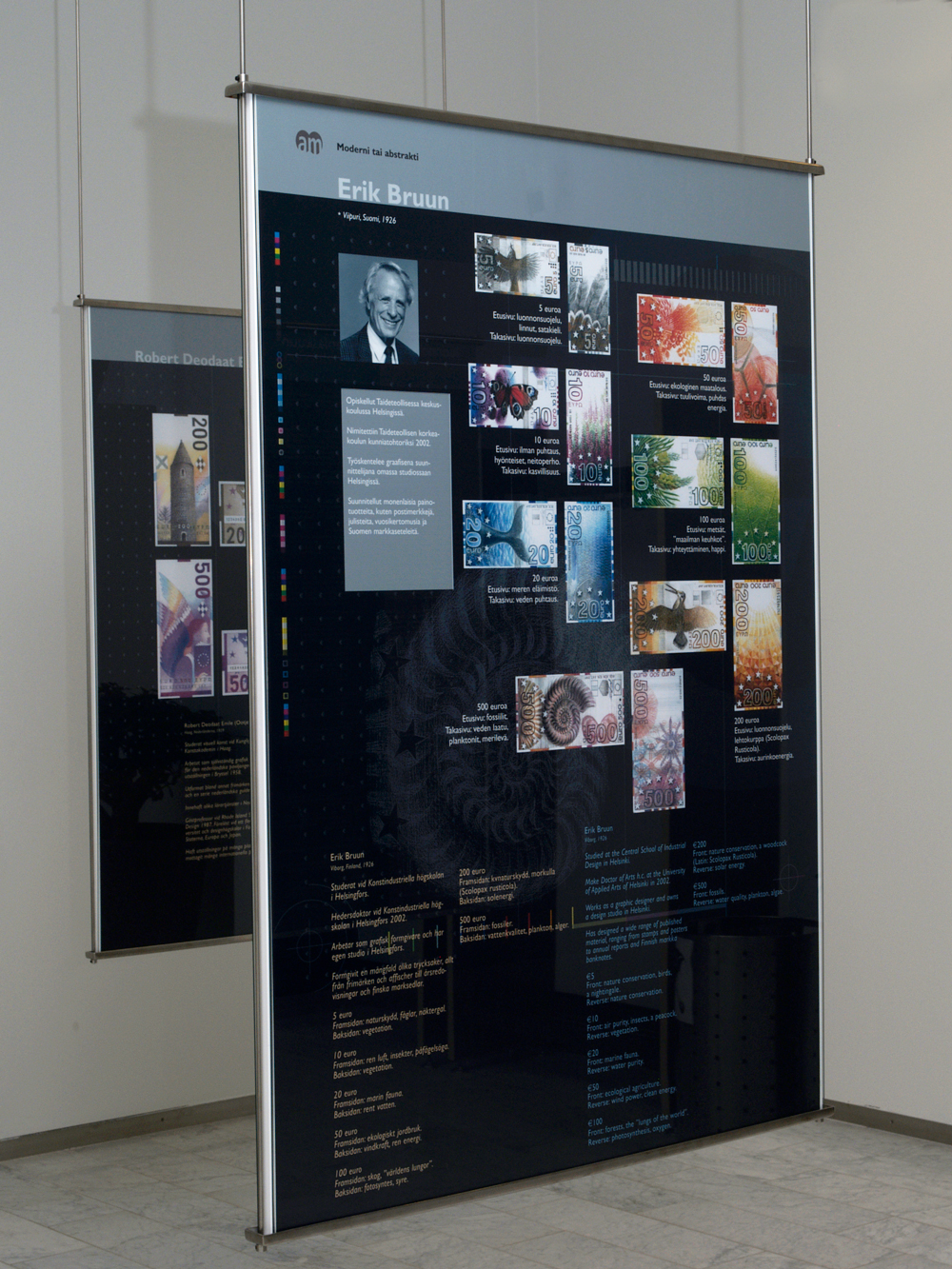
Erik Bruun's sketches for euro banknotes.
The country that paid its debts
Finland’s reputation as a reliable debtor was established in 1932, when Finland paid the instalment in full and on time to the United States on a food loan received in 1919. In 1931, US President Herbert Hoover had granted its European debtor countries a year-long moratorium as part of an arrangement of international economic relations. Finland was the United States’ only debtor country that continued to pay its debt to the end. Between 1933 and 1936, almost 3,000 stories were published in American newspapers on Finland’s debt repayment and on Finland.
Finland continued to meet its regular instalments until the 1940s, when a few years’ moratorium was called because of World War II. At that time, Finnish and US authorities also discussed whether it would be possible to invest the money repaid by Finland into something that would benefit Finland. This aim was met through the ASLA grant fund established in 1951. The last repayment on the debt was made in accordance with a renewed, faster schedule in 1976.
The very first seasonal exhibition at the Museum ran from 22 August 2003 to 31 August 2004.